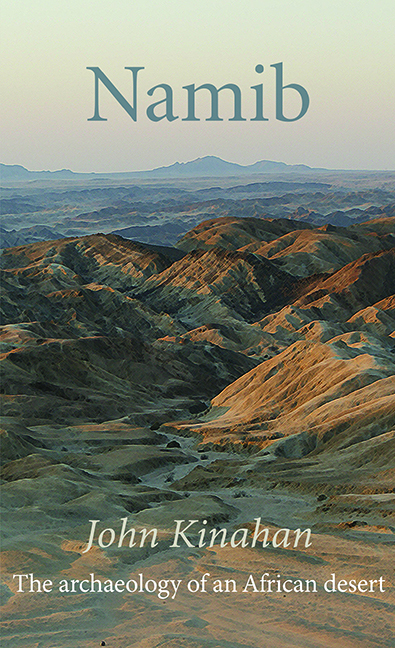Book contents
- Frontmatter
- Contents
- Miscellaneous Frontmatter
- Map
- Dedication
- Preface
- Acknowledgements
- Notes to the Reader
- List of Abbreviations
- List of Figures and Tables
- 1 Introduction
- 2 First Footsteps
- 3 Time’s Arrow
- 4 Mountain Refuge
- 5 Elephants and Rain
- 6 Desert Garden
- 7 The Family Herd
- 8 The Black Swan
- 9 Men in Hats
- 10 The Death of Memory
- Epilogue
- Glossary
- Bibliography
- Index
- Frontmatter
- Contents
- Miscellaneous Frontmatter
- Map
- Dedication
- Preface
- Acknowledgements
- Notes to the Reader
- List of Abbreviations
- List of Figures and Tables
- 1 Introduction
- 2 First Footsteps
- 3 Time’s Arrow
- 4 Mountain Refuge
- 5 Elephants and Rain
- 6 Desert Garden
- 7 The Family Herd
- 8 The Black Swan
- 9 Men in Hats
- 10 The Death of Memory
- Epilogue
- Glossary
- Bibliography
- Index
Summary
If there is a threshold of tolerance for climatic adversity, such as the extreme aridity that gripped southern Africa at the end of the Pleistocene, humankind has always evaded its worst consequences. This is because over time, our ceaseless experimentation and curiosity nurtured the one resource that never failed: memory, or accumulated, shared and refined human experience. The lack of certainty in the world could be met with imagination and invention, one innovation leading to another, all drawing from the well of history. In this way, the arrow we loosed from the bow embodied an intuitive physics of prediction, and our religious beliefs the metaphysics of causation.
Archaeological evidence for the expansion of southern African hunter-gatherer populations at the beginning of the Holocene includes large numbers of rock shelter sites with stratified occupation deposits which have yielded both stone tool assemblages and well-preserved organic materials. Bone, wooden and leather artefacts form part of an increasing range of material culture items accompanied by food remains reflecting the diversity of plant and animal resources on which hunter-gatherers depended. Many of the sites are also associated with rock art, providing a body of further evidence for a florescence of complex ritual practices during the last ten millennia.
Early Holocene hunter-gatherers in some parts of the subcontinent responded to climatic variation by adopting patterns of movement to maximize exploitation of seasonally available resources (Fig. 3.1). Conditions in the Namib Desert were less predictable and required more opportunistic responses to episodic and shifting patterns of rainfall. Hunter-gatherer groups were able to penetrate remote parts of the desert to exploit short-lived concentrations of migratory antelope and a limited range of wild plants. During the first half of the Holocene hunting techniques became more specialized and the use of inland escarpment locations during dry periods intensified with the appearance of major rock art sites indicating an increasing reliance on ritual sanctions in the maintenance of community relations.
Relatively moist conditions during the early Holocene probably enabled a growth, or r phase in the adaptive cycle leading to an equilibrial, or K phase as expansion was curtailed by the onset of mid-Holocene aridification. Increasing aridity in the mid- Holocene is associated with the use of primary resource sites as aggregation centres on the eastern escarpment of the desert.
- Type
- Chapter
- Information
- NamibThe Archaeology of an African Desert, pp. 81 - 126Publisher: Boydell & BrewerPrint publication year: 2022



